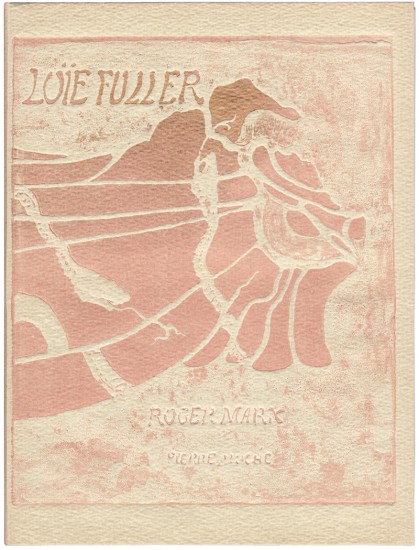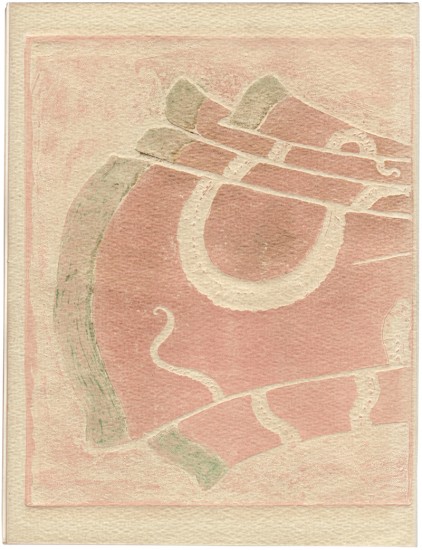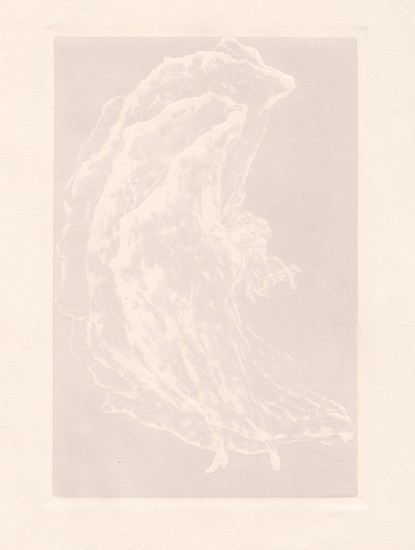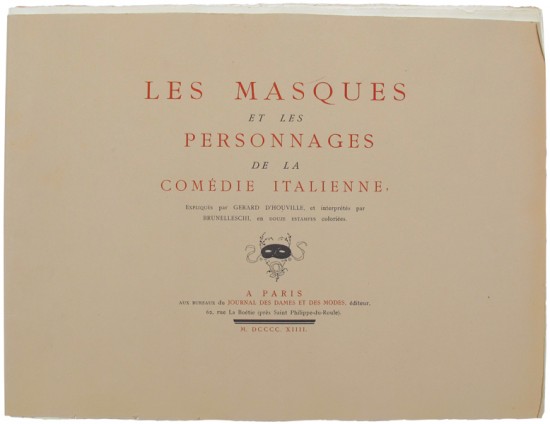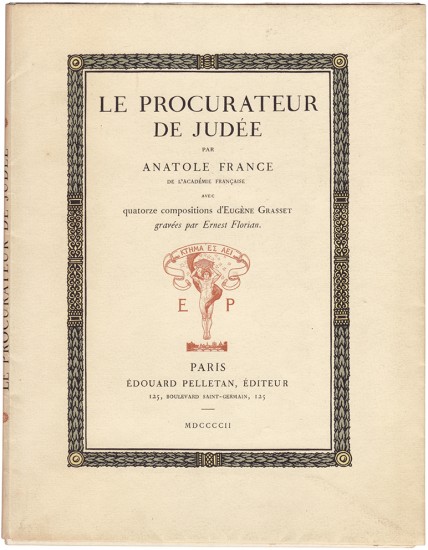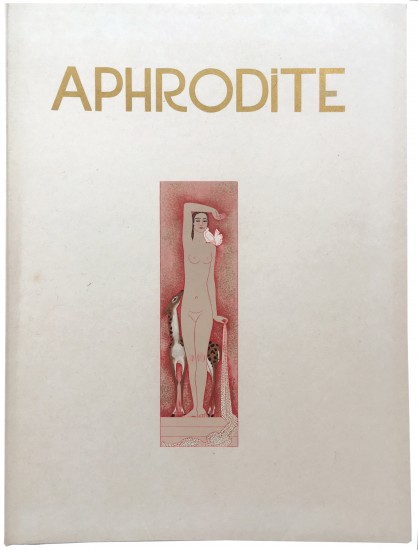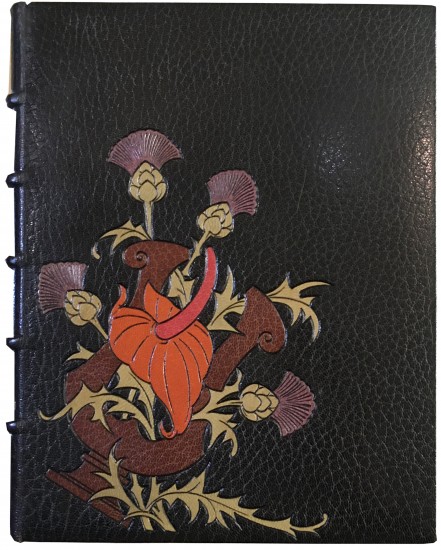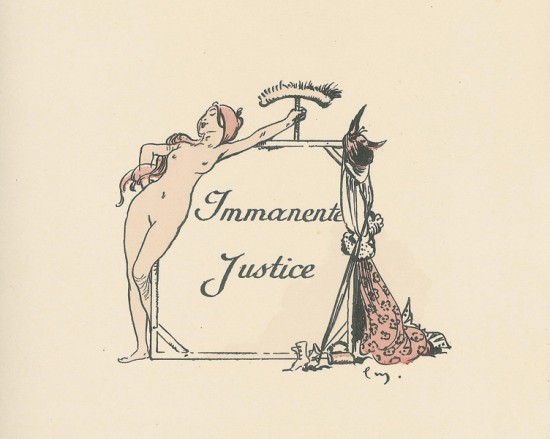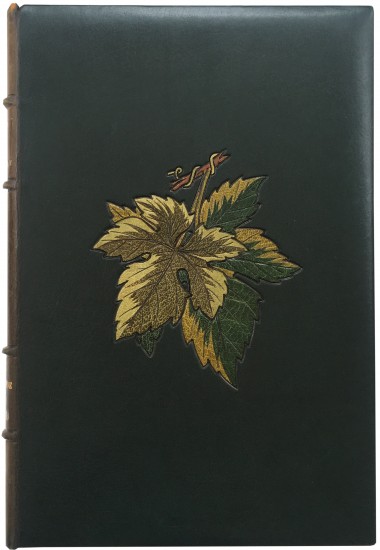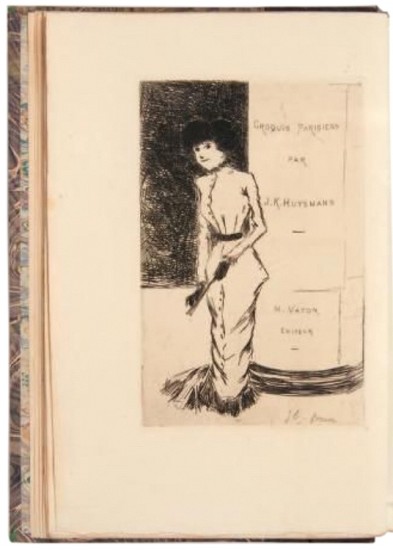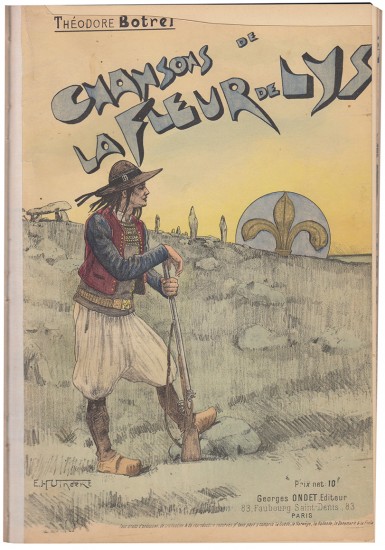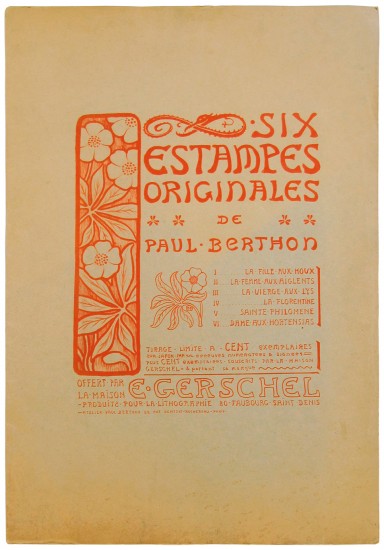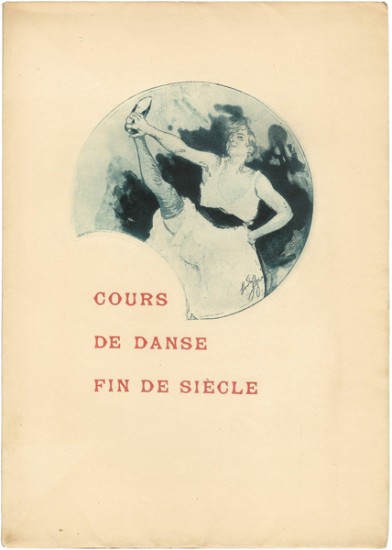La Loïe Fuller. Estampes Modelées de Pierre Roche
Roche, Pierre. Marx, Roger
Evreux. Charles Hérissey. 1904
Roche's masterpiece of Art Nouveau design using his own printing process.
From the edition limited to 130 copies, with this nominatif copy, number 31, printed for 'Monsieur Fernand Dehaitre'; 'Achevé d'imprimer sous la Presidence d'Eug. Rodrigues à Evreux par Charles Herissey le 22 janvier 1904 sous la direction de Gautherin. Les figures tirées sur les Presses de Maire.'
One of the most evocative and emblematic of Art Nouveau illustrated books, this is a masterpiece of design and mise-en-page. The relief engraving (or estampilles), a process invented by Pierre Roche, beautifully evoke the movements of Loie Fuller's dances and the text fits perfectly with these gem-like engravings. The text is printed in Auriol Italique and is the first utilisation of this type face.
Pierre Roche (1855-1922) was a sculptor and from 1892 used his skills to create prints in relief. Firstly, using plaster moulds, he modelled the damp paper which he then coloured by hand. Ink was then applied directly to the mould, as with a wood-engraving: this process is known as gypsography. Later he replaced the plaster with metal to achieve more precision in the relief. It was this later technique which he used for this book in 1904, in which the prints appear to be medallions set within the typographic mise en page.
'The dancer [Loïe Fuller], who had come to Paris in 1892, figures frequently in the posters of Chéret, Toulouse-Lautrec, and other artists of the period. Fifty years later Friedrich Ahlers-Hestermann wrote of 'Loïe Fuller who, whirling on her own axis like a corkscrew or spinning top, with countless yards of veil-like materials shining in colored light like an iridescent Tiffany vase, became in her increasingly audacious serpentines, a gigantic ornament' (quoted by Schmutzler, p. 10). In other words, she was 'the very symbol of Jugendstil, the embodiment of Art Nouveau.' Marx's book is the most delicate and personal of the tributes accorded her.' (Ray).
[Carteret, IV, 345; Ray 368].
From the edition limited to 130 copies, with this nominatif copy, number 31, printed for 'Monsieur Fernand Dehaitre'; 'Achevé d'imprimer sous la Presidence d'Eug. Rodrigues à Evreux par Charles Herissey le 22 janvier 1904 sous la direction de Gautherin. Les figures tirées sur les Presses de Maire.'
One of the most evocative and emblematic of Art Nouveau illustrated books, this is a masterpiece of design and mise-en-page. The relief engraving (or estampilles), a process invented by Pierre Roche, beautifully evoke the movements of Loie Fuller's dances and the text fits perfectly with these gem-like engravings. The text is printed in Auriol Italique and is the first utilisation of this type face.
Pierre Roche (1855-1922) was a sculptor and from 1892 used his skills to create prints in relief. Firstly, using plaster moulds, he modelled the damp paper which he then coloured by hand. Ink was then applied directly to the mould, as with a wood-engraving: this process is known as gypsography. Later he replaced the plaster with metal to achieve more precision in the relief. It was this later technique which he used for this book in 1904, in which the prints appear to be medallions set within the typographic mise en page.
'The dancer [Loïe Fuller], who had come to Paris in 1892, figures frequently in the posters of Chéret, Toulouse-Lautrec, and other artists of the period. Fifty years later Friedrich Ahlers-Hestermann wrote of 'Loïe Fuller who, whirling on her own axis like a corkscrew or spinning top, with countless yards of veil-like materials shining in colored light like an iridescent Tiffany vase, became in her increasingly audacious serpentines, a gigantic ornament' (quoted by Schmutzler, p. 10). In other words, she was 'the very symbol of Jugendstil, the embodiment of Art Nouveau.' Marx's book is the most delicate and personal of the tributes accorded her.' (Ray).
[Carteret, IV, 345; Ray 368].
[Blank bifolium, 13 doubled leaves, blank bifolium]. Large 8vo. (265 x 200 mm). Leaf with half-title recto, justification verso, leaf with frontispiece verso, leaf with relief title recto and 10 leaves with text illustrated with 16 'gypsographies' (colour relief engravings) by Pierre Roche, final leaf with achevé d'imprimer verso. Loose as issued in the original engraved wrappers by Roche, original paper board portfolio with title to front cover (portfolio with flaps repaired, lacking tie), later protective portfolio with gilt title to spine.
#46931
